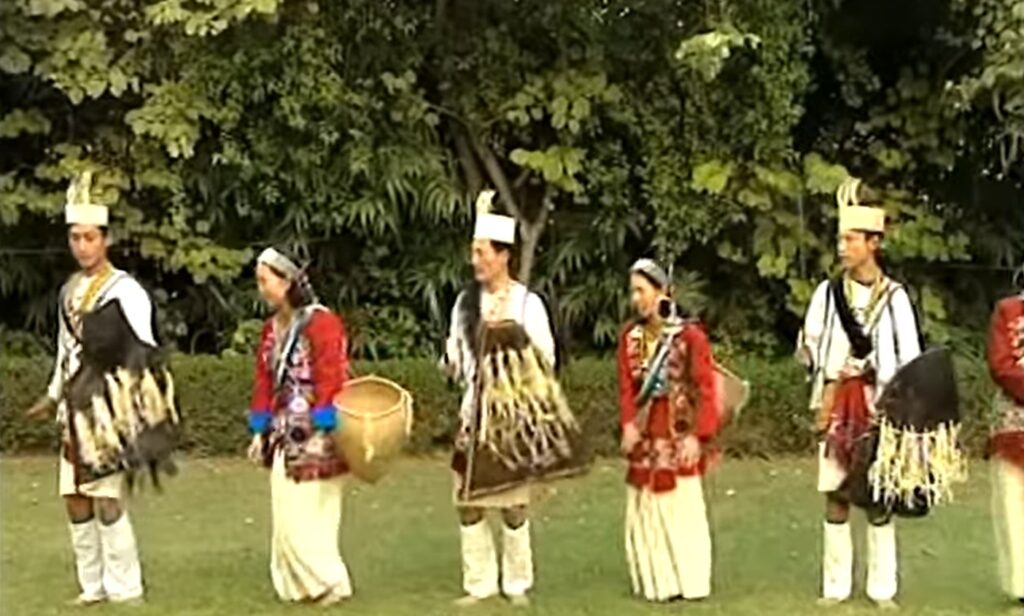Another popular folk dance of Arunachal Pradesh, Pasi Kongki is a celebration of a tribe called Adi. The dance is performed to narrate the social work that the Pasi has done. It is indeed a unique representation of the rich culture that defines the Adi tribe of Arunachal Pradesh.

The Adi Tribe
Believed to have Chinese origins, the Adi Tribe is one of the oldest tribes that has been residing in the lush green valleys of Arunachal Pradesh since the sixteenth century. The tribe has further sub-divisions with their own set of customs and traditions. Among all the villages, Adi-Pasi is of particular interest due to the Siang river that borders it. This place is important for the tribe. There are many stories surrounding this village that form a vital part of their celebrations.
The Adi tribe considers dance as an essential part of life that keeps the zest and joy alive in people. The dance performances have a lot of meaning to Adi people. It keeps the whole tribe united.
Importance of Pasi Kongki Dance
The Pasi Kongki dance is a beautiful representation of the Pasi’s activities for the welfare of the tribe. The dance is performed to the tune of a song sung by the locals. The song is called Aabang.
The dance depicts how the Pasi would go to the plains to fetch iron and other essentials from the market. They would march on foot, crossing the dangerous hilly terrain. The iron procured from the plains was then brought to the smith known as the Pasi Mide. The smith’s job was to transform the raw iron into sharp Daos or knives of various shapes and sizes.
Through the Pasi Kingki dance, the tribe pays tribute to those great men who risk their lives to fetch items for the villagers.
Dance Formation and Costume
Both men and women can perform the dance. The dancers form a straight line and match their steps to the rhythm of the drum. The men have a much more energetic movement when compared to women.
The costumes worn by the dancers make the performance even more picturesque. The men wear a white shirt matched with a white loincloth on the bottom. A long sleeveless jacket is worn on top that goes up to the knees. The headgear is adorned with many black and white feathers. They wear some jewelry around their neck and hands. Some also wear silver rings around the ankles. All the men carry a sword in their hands while dancing.
The women look gorgeous costumed in a blouse and a skirt going up to their ankles. Long gold and silver chains adorn their necks and chests. The head is covered with a conical shaped hat, draped in colorful cloth, and a trail hanging in the back. They also wear spiral-shaped jewelry on their legs that chime as they move around.

Pingback: All Folk Dances of India - Auchitya
Pingback: All Folk Dances of India - Auchitya